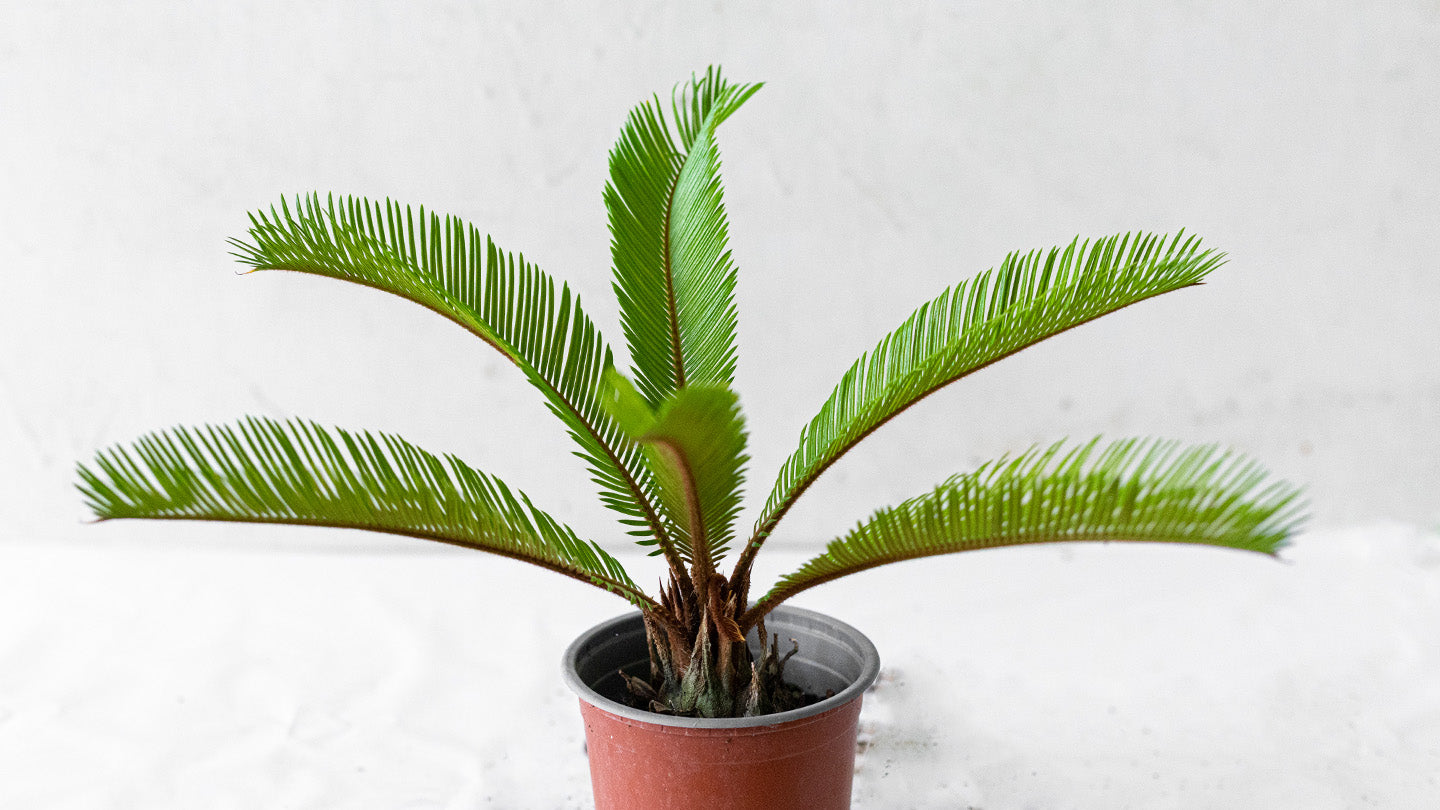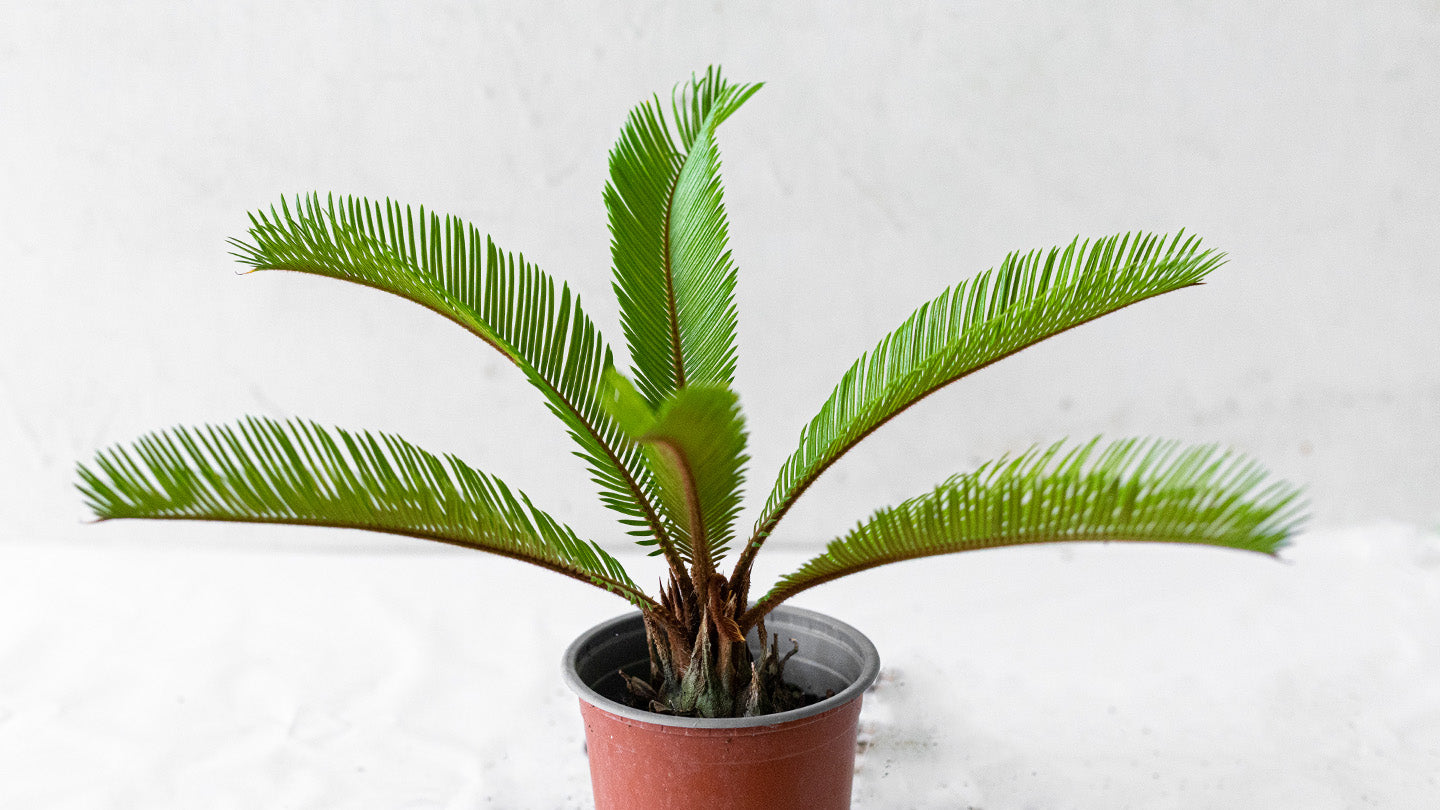cybloom
Cycas
Regular price
€13,50 EUR
Regular price
Sale price
€13,50 EUR
Unit price
per
Tax included.
Couldn't load pickup availability
Life Form: Tree
Family: Cycadaceae
Origin: Tropics and subtropics of China, Japan, Malaysia
Ease of Cultivation: Not very easy to grow a plant, but it can successfully grow with a florist with little experience
The Size: Up to 2-3 m in width and height
Growth: Average
Lifespan: Perennial
Temperature: In the summer: optimum 68-73,4 ° F. In winter, not below + 57,2-59 ° F.
Humidity: In summer it is required to spray at least once every 2 days with soft, settled water so that by evening the water will dry. The trunk of the plant is useful to wrap in wet sphagnum moss. It is advisable to regularly wipe the leaves. In summer it is required to spray at least once every 2 days with soft, settled water so that by evening the water will dry. The trunk of the plant is useful to wrap in wet sphagnum moss. It is advisable to regularly wipe the leaves.
Lightning: The bright diffused light, it is best to place the plant in the south, south-west or south-east window, even better to take the plant in the garden in the summer and place it in the penumbra. From direct sunlight, it is necessary to shade. For uniform development of the crown, it is desirable to periodically turn the plant. since it tends to asymmetric development.
The Soil: Ready-made primer “Palma” is suitable. Requires a light rich soil with an admixture of peat and sand. Soil homemade take: 1 part sod land, 1 part humus, 1 part of moist peat and humus (leaf ground), 1 part peat, 1 part coarse sand or perlite. You can not loosen the soil, t. it is possible to damage the thin superficial roots of the plant. Requires a pot with a hole and good drainage.
Watering: In the summer, every 6-15 days. It must be ensured that water does not accumulate in the pan. The soil between waterings should dry up a little, but remain hardly damp.
Fertilizer: From spring to autumn, fed once every 1-2 months with organic fertilizer (a solution of mullein or horse manure). The plant does not tolerate mineral fertilizers.
Reproduction: It is possible to reproduce with fresh seeds, which can not be obtained in room conditions, but can be bought at the store. Seeds very quickly lose their germination (about a month), so immediately after the acquisition they are soaked overnight in water (its temperature is 86-95 ° F), sown in a mixture of peat and perlite (sand), lightly sprinkled with earth and germinated under the film at a temperature 68-77 ° F. Each day, the greenhouse should be ventilated, taking off the film for 5 minutes. After germination, remove the film and put it in a lighted place. Cicada can reproduce by lateral shoots, which sometimes form at the base of the plant. These sprouts quite easily take root in a mixture of peat and sand. They are harvested during the winter dormancy of the plant.
Bloom: Does not bloom. Instead of inflorescences, it forms cones in the form of cones.
Difficulties: It is affected by a spider mite, chervets, shields, powdery mildew, however pests on cicada appear infrequently. When excessive watering on the leaves of the plant appear brown spots, and with insufficient leaves turn yellow. Leaflets wither in too dry air and turn yellow in the winter with waterlogging and lack of light. With an excessive amount of moisture under conditions of low temperature, rotting of the root system is possible. When lesions with a scutellum on the leaves, light spots appear. The tips of the leaves turn yellow in dry air and with insufficient watering. The too-slow growth of cicada is observed with insufficient nutrition. Gradual drying of the lower leaves is a natural process.


